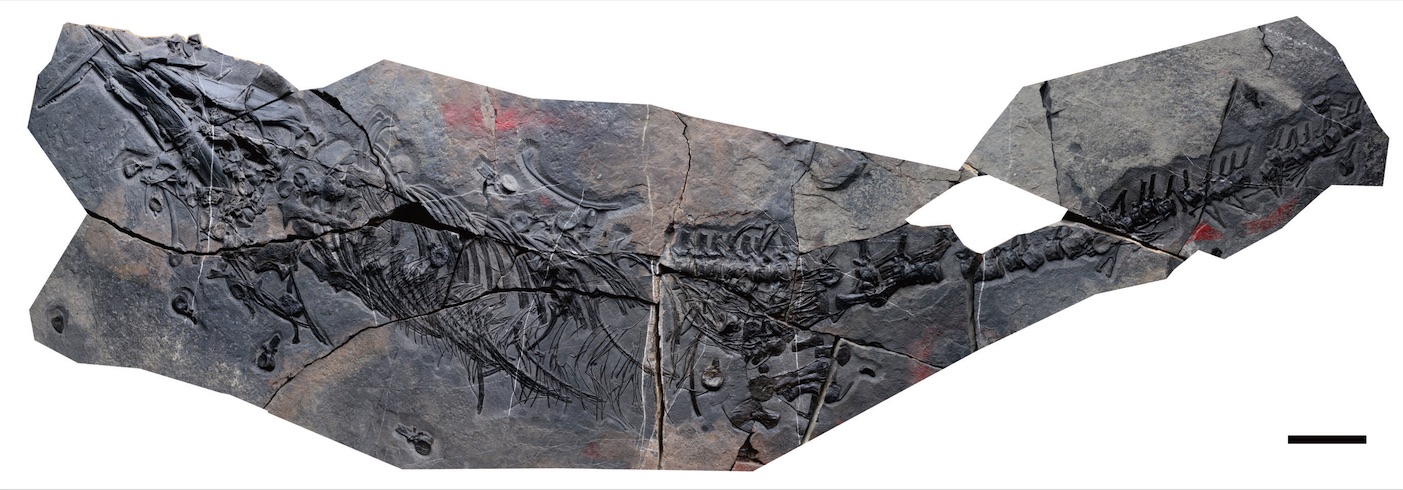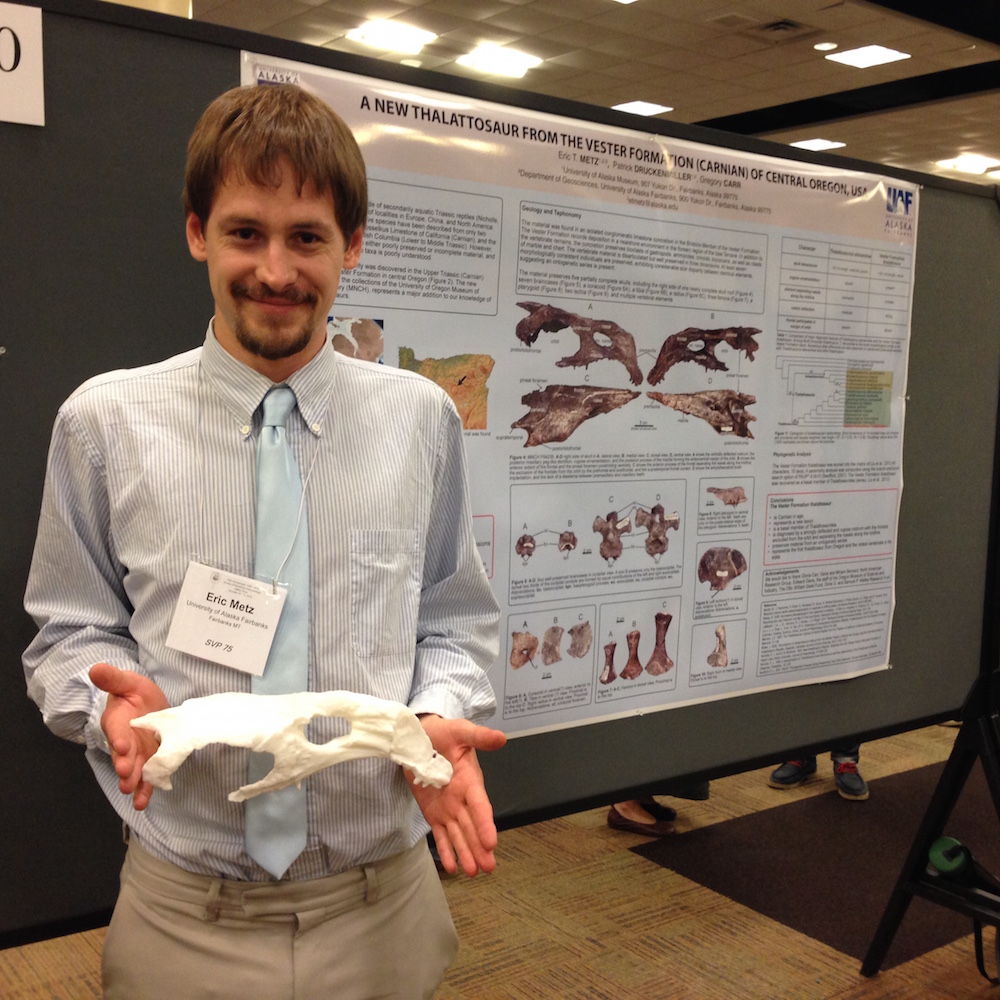Triassic Reptile Skewered Clams with Teeth on Roof of Its Mouth

Giant, lizardlike beasts with teeth strong enough to puncture clamshells and equipped with short limbs and a long, paddle-shaped tail populated waterways some 200 million years ago. And now, two new species of these thalattosaurs have been added to the ranks.
The two thalattosaurs, discovered by separate groups of scientists, are from different sides of the world — one from central Oregon and the other from China's southwestern Guizhou province.
Both species have yet to be named, but researchers shared their unpublished findings with Live Science in October at the 75th annual Society of Vertebrate Paleontology conference in Dallas. [Image Gallery: Ancient Monsters of the Sea]
Thalattosaurs are semi-aquatic, meaning they hunted prey in the water but likely slept on land, much like seals and sea lions.
"They're kind of known for being weird," said Eric Metz, a graduate student in the geosciences department at the University of Alaska Fairbanks.
For instance, some thalattosaurs had no teeth, while others, including the new species in Oregon, sported teeth on the roofs of their mouths, which likely helped them crush mollusks, Metz told Live Science.

Until now, scientists knew of just five species of thalattosaur that lived in North America during the Triassic period. But the new specimens — there are at least seven in all — bring that tally to six, Metz said.
Sign up for the Live Science daily newsletter now
Get the world’s most fascinating discoveries delivered straight to your inbox.
The North American thalattosaur remains were found in rocks dating to about 235 million to 228 million years ago, making them the oldest known vertebrate remains in Oregon, he said. These thalattosaurs lived on a volcanic island off the coast of Oregon, but that land has since been pushed inland, and now sits in the central part of the state, Metz said.
The finding is "huge" because the thalattosaur remains belong to individuals of different ages, meaning researchers can study how the reptiles changed from youth to adulthood, Metz said. Moreover, the adults are the largest known North American thalattosaurs, measuring about 9.8 feet (3 meters) long from head to tail, he added.
The species also had a downturned snout, which it likely used to break apart reefs made of mollusks and sponges, Metz said.
The other new species of thalattosaur is slightly older, from rocks dating to the Middle Triassic, about 242 million to 235 million years ago. Researchers have found other thalattosaur remains in southwestern China since the 1990s, but this is the first time they have discovered fossils from the genus Xinpusaurus in the city of Xingyi in Guizhou province, said study researcher Zhi-Guang Li, a doctoral candidate of geology at Peking University in Beijing.
The new species was found in 2011 alongside fossils of other marine reptiles, fishes and invertebrates, but it took a few years to analyze the new species of thalattosaur, Li said. It measures 6.9 feet (2.1 m) from its head to its slightly broken tail.
Paleontologists have unearthed other thalattosaurs in Europe, China and North America, but these new finds may help researchers learn more about the ancient reptiles' geographic range, anatomy and diversity, the researchers on both studies said.
Follow Laura Geggel on Twitter @LauraGeggel. Follow Live Science @livescience, Facebook & Google+. Original article on Live Science.

Laura is the archaeology and Life's Little Mysteries editor at Live Science. She also reports on general science, including paleontology. Her work has appeared in The New York Times, Scholastic, Popular Science and Spectrum, a site on autism research. She has won multiple awards from the Society of Professional Journalists and the Washington Newspaper Publishers Association for her reporting at a weekly newspaper near Seattle. Laura holds a bachelor's degree in English literature and psychology from Washington University in St. Louis and a master's degree in science writing from NYU.









